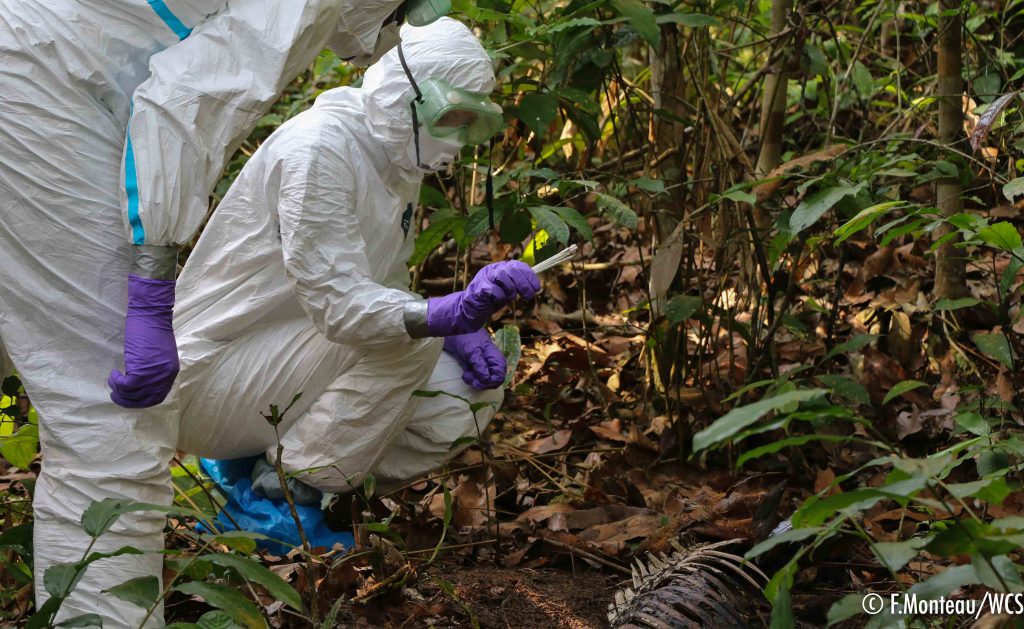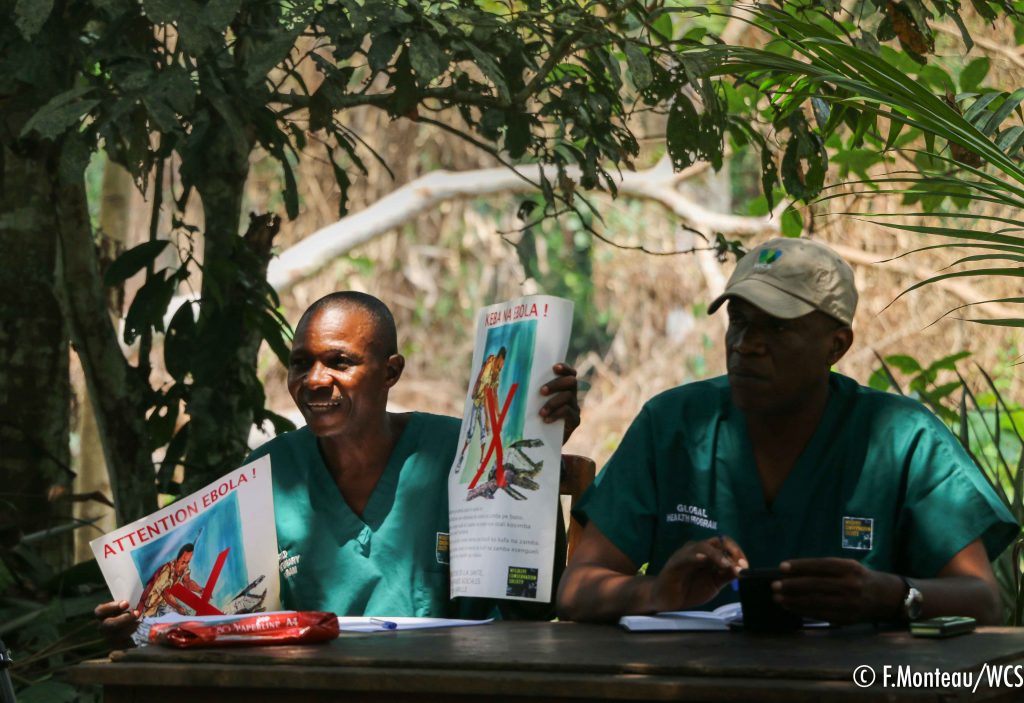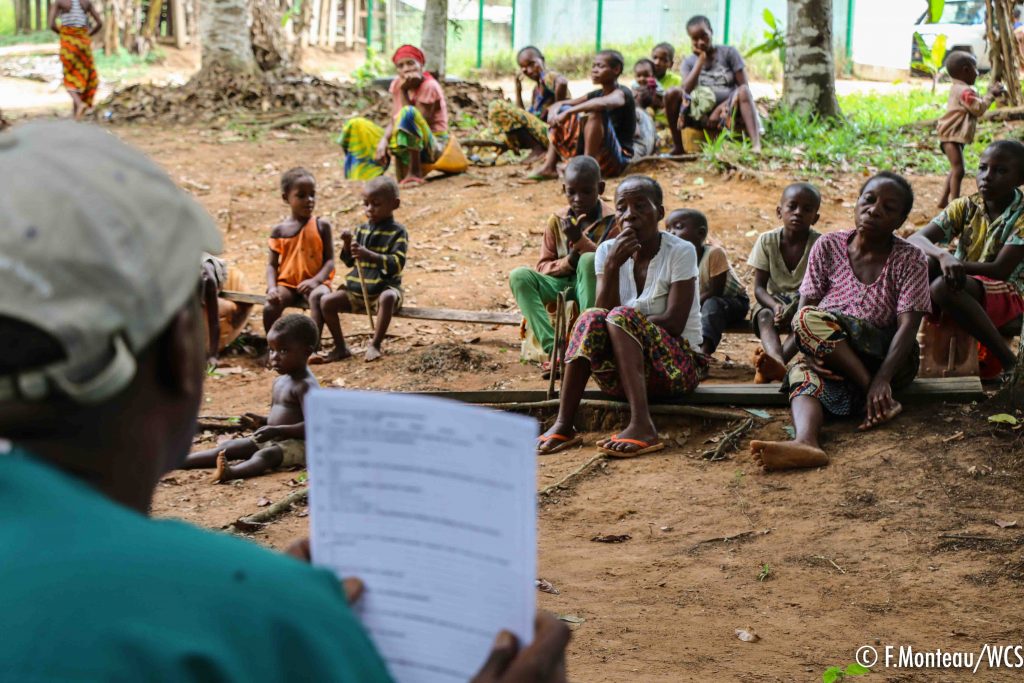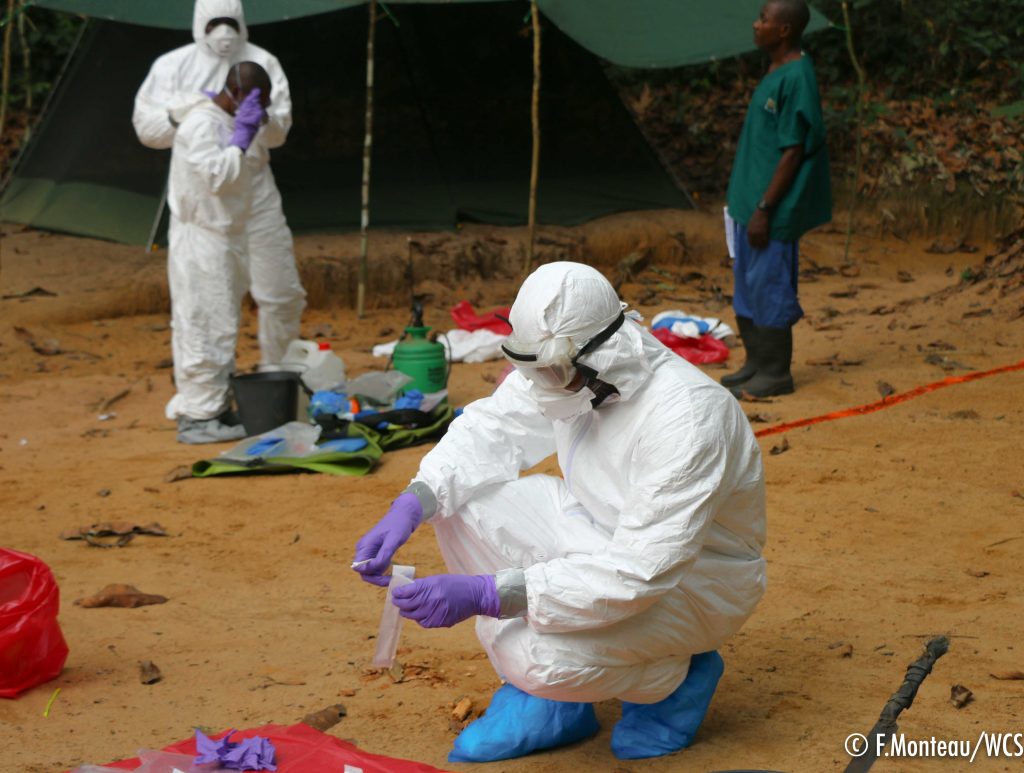Zoonotic viruses: preventing epidemics by monitoring wildlife mortality
For over 14 years, the Wildlife Health Programme (WHP) implemented by WCS in partnership with the National Laboratory of the Congolese Ministry of Health, has been working to monitor wildlife mortality and minimize the risks of disease transmission to communities. The project raises awareness among communities in northern Congo and has set up an early warning system for unexplained wildlife deaths that covers more than 30,000 km2.

As we have been acutely reminded by the Ebola epidemics in West Africa and the Democratic Republic of Congo in recent years, and currently by the COVID-19 outbreak, outbreaks of zoonotic viruses can lead to the loss of many human lives and can bring populations of already threatened wildlife species to the brink of extinction. In the Republic of the Congo, for example, the most recent Ebola outbreak in 2005 had a human mortality rate of more than 80% with 10 deaths recorded. In addition, an estimated 5,000 great apes also died (with a mortality rate of 96%) within a 40 km radius of the Lossi Reserve. While the precise causes remain uncertain, past outbreaks of Ebola in human populations and the recent COVID-19 outbreak appear to have originated from infected animal sources that came into contact with humans. Ebola virus disease (EVD) remains the main cause of the decline of gorilla and chimpanzee populations in Africa, ahead of hunting and habitat loss.

Zoonotic disease outbreaks, like Ebola, involve contact between infected animals and people and, in the Congo Basin, that contact is often associated with infected meat. Traditional hunters and gatherers have been identified as key players in the monitoring and surveillance of zoonotic diseases in large tracts of uninhabited forest because they are the first to locate and report carcasses or suspicious behaviours.
”``If we really want to track animal mortality in wildlife, we need to involve traditional hunters and gatherers in our disease surveillance system. They are the first people to come into contact with animals found dead in the forest.” explains Dr. Alain Ondzie, head of WHP for WCS Congo.
Since 2006, the team, composed of Dr. Ondzie, and his assistants, has been tirelessly touring the villages of northern Congo. Their purpose is to raise community awareness of best practices when villagers encounter a wild animal carcass in the forest. In the last 10 years, hunters from more than 260 villages in the departments of Sangha, Cuvette, Cuvette Ouest and Likouala have been engaged in this program. Over 6,660 hunters and thousands more women and children are now aware of the risks associated with coming into contact with dead animals where the cause of death is unknown. As part of the awareness raising sessions, participants are encouraged to take part in a monitoring network to report carcasses they discover. The network covers more than 30,000 km2 of remote forest in northern Congo, an area that is home to more than 60% of the world’s gorillas. These remote areas are far from public health services and Dr Ondzie’s team is often the only source of public health information on Ebola to these forest communities.

Thanks to this network, 58 carcasses have already been reported, analysed, and tested negative for the Ebola virus at the national laboratory in Brazzaville. Central Africa remains a high-risk region, but the Republic of the Congo, home to the largest population of gorillas, has not experienced an Ebola epidemic since 2005. Moreover, return visits and conversations with village leaders reveal risky contacts with wildlife carcasses are being avoided and reduced.
When a hunter reports a carcass, the team can sometimes travel up to 200 km, often on foot through the forest, to safely collect samples from the carcass for testing. Once the sample is collected, it is sent to the national laboratory for analysis and the WHP team returns to the reporting village to reinforce health messages. To increase efficiency, the health program teams are also training teams based at different sites in northern Congo to ensure rapid and safe sampling. Training is essential for taking high-quality samples that can be readily analyzed, and more importantly to ensure the health and safety of sample collectors. Training takes two to three days, during which time Dr. Ondzie and his assistants demonstrate the procedures for safe sample collection. Dressed in full Tyvex biosafety suits, the trainees then practice the strict protocols for several hours and under different scenarios. At the end of the training, sampling kits are stashed on site so that the teams are ready to respond to any carcass report. This year, thanks to the efforts of the health programme, 22 people from the WCS research teams have been trained on the sampling protocol.

Sample analysis is also an essential step to effective zoonoses monitoring. To this end, the health program collaborates with the U.S. National Institutes of Health, and the Brazzaville National Public Health Laboratory to ensure timely sample analyses. In the early days, analysis could take several weeks and needed to be done in a different country. This has now been reduced to two days and is done in-country thanks to the efforts of the various partners. However, two days of analysis does not include the time taken to transport the samples from northern Congo to Brazzaville – leading to diagnostic times that are still too long when it comes to a disease as serious as Ebola. Therefore, WCS is currently working on the implementation of a portable diagnostic tool that would allow real-time testing directly at the site where the carcass is found. Once this system is fully operational, testing time will be reduced from two days to one hour, allowing improved safety measures to be immediately implemented in the event of a positive result.
The current coronavirus outbreak is a stark reminder of the need for early warning systems for emerging diseases and zoonoses. These remote forests and the communities that depend upon them are some of the most vulnerable to a future zoonotic disease epidemic: at the frontline of the human -wildlife-ecosystem interface and yet with some of the poorest access to public health infrastructure. The WCS Health Program and its partners are committed to supporting the early warning system it has put in place in these remote areas, to detect as yet unknown zoonotic viruses and in protecting vulnerable communities and biodiversity. This is done thanks to the support of our technical and financial partners who enable us to implement our actions in the field.


Susan
Your organization does a great job, and I think due to all events that happened in 2020, monitoring wildlife mortality deserves greater attention.